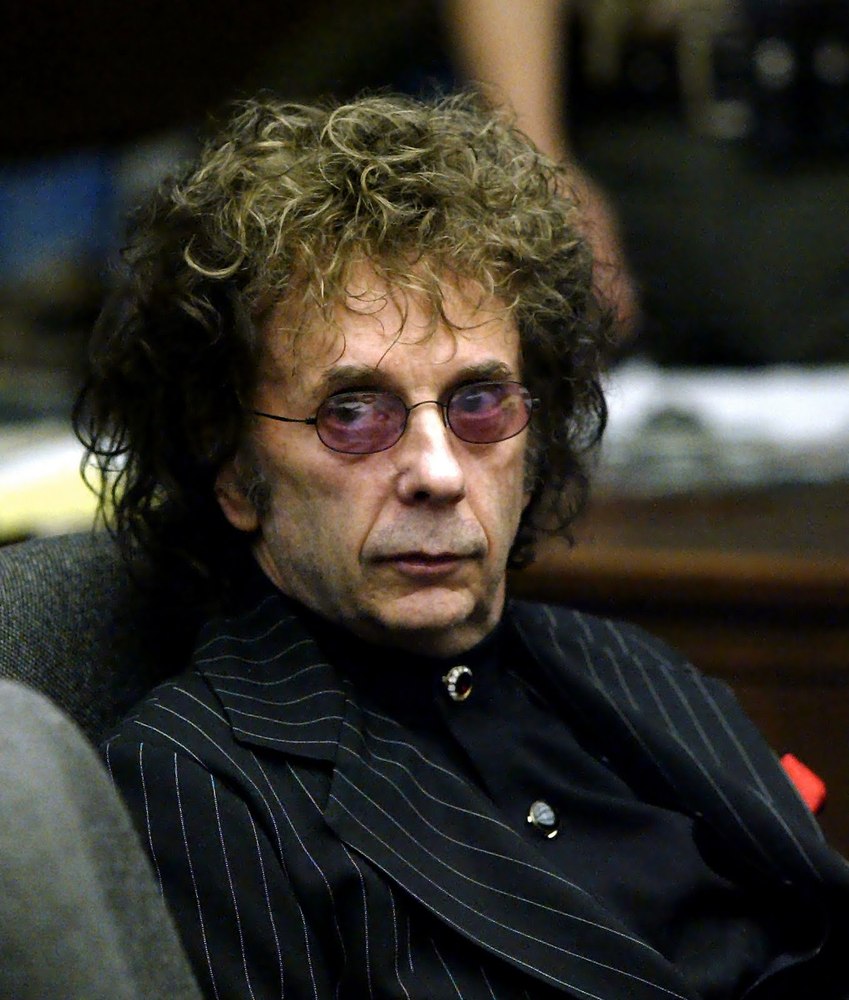Who Did Phil Spector Kill? Unveiling The Dark Side Of A Music Legend
Phil Spector, one of the most iconic music producers in history, became entangled in a tragic and controversial legal case that shocked the world. The question "Who did Phil Spector kill?" remains a topic of fascination and debate among music enthusiasts and the general public alike. In this article, we delve into the life of Spector, his infamous legal battle, and the life of the victim whose story must not be forgotten.
Beyond the walls of Wallkill Correctional Facility, where Phil Spector spent his final years, lies a story that transcends music and fame. This article aims to shed light on the dark chapter of Spector's life, examining the events that led to his conviction and exploring the impact on those involved. By understanding the circumstances surrounding this tragedy, we can better appreciate the complexities of justice and human behavior.
Join us as we explore the life of Phil Spector, the details of the case, and the legacy he leaves behind. Through a detailed analysis, we hope to provide clarity and insight into the question: Who did Phil Spector kill?
Read also:Jade Kimiko Unveiling The Rising Star In The Digital World
Table of Contents
- Phil Spector Biography
- Who Did Phil Spector Kill?
- Timeline of Events
- The Legal Case
- Psychological Analysis
- Impact on the Music Industry
- Public Opinion and Media Coverage
- Defense Arguments and Evidence
- Prosecution's Case
- Conclusion and Legacy
Phil Spector Biography
Phil Spector, born Harvey Phillip Spector on December 26, 1939, in the Bronx, New York, revolutionized the music industry with his "Wall of Sound" production technique. This innovative method transformed the sound of popular music in the 1960s, earning him a place in music history. However, his genius was often overshadowed by erratic behavior and a tumultuous personal life.
Early Life and Career
Spector's early life was marked by tragedy and resilience. After moving to California with his family, he found solace in music, forming a band called The Teddy Bears. His first taste of success came with the hit single "To Know Him Is to Love Him," which reached No. 1 on the charts in 1958. This early success set the stage for a prolific career producing hits for artists like The Ronettes, The Crystals, and The Beatles.
Biodata and Personal Life
| Full Name | Harvey Phillip Spector |
|---|---|
| Date of Birth | December 26, 1939 |
| Place of Birth | Bronx, New York |
| Occupation | Music Producer |
| Notable Works | "Be My Baby," "River Deep – Mountain High," "Let It Be" |
Who Did Phil Spector Kill?
Phil Spector was convicted of the murder of Lana Clarkson, a former actress and model whose life was tragically cut short on February 3, 2003. The case sent shockwaves through the entertainment industry and brought Spector's troubled personal life into the public eye.
Who Was Lana Clarkson?
Lana Clarkson, born Barbara Diane Bambury on June 17, 1963, was a talented actress and model known for her work in films like "Barbarella" and "The Karate Kid." Despite her promising career, Clarkson struggled with substance abuse and financial difficulties in her later years. Her untimely death at the age of 38 left a void in the entertainment world and raised questions about the pressures faced by those in the industry.
Timeline of Events
The events leading to Lana Clarkson's death unfolded on the evening of February 3, 2003, at Phil Spector's estate in Alhambra, California. Here is a detailed timeline:
- 7:00 PM: Clarkson arrives at Spector's mansion after meeting him at a nightclub earlier that evening.
- 10:00 PM: Witnesses report hearing a loud noise resembling a gunshot.
- 11:00 PM: Law enforcement arrives at the scene and discovers Clarkson's body in the foyer of the mansion.
This timeline forms the backbone of the investigation and subsequent legal proceedings.
Read also:Discover The Charm Of Fort Walton Beach Florida Your Ultimate Guide To Paradise
The Legal Case
Spector's legal battle was one of the most high-profile murder cases in recent history. The prosecution argued that Spector shot Clarkson in the mouth with a revolver, while the defense claimed she took her own life. After two trials, Spector was found guilty of second-degree murder in 2009.
Key Evidence
Forensic evidence played a crucial role in the case. Blood spatter patterns and gunshot residue analysis were central to the prosecution's argument. Additionally, testimony from witnesses who described Spector's behavior that evening helped paint a picture of the events leading to Clarkson's death.
Psychological Analysis
Phil Spector's psychological profile is a complex tapestry of genius and instability. Experts have suggested that his obsessive nature and paranoia may have contributed to his actions. Understanding his mental state provides insight into the tragedy and highlights the importance of mental health awareness in high-pressure environments.
Contributing Factors
- Paranoia and fear of abandonment
- History of substance abuse
- Isolation from peers and industry colleagues
Impact on the Music Industry
The Phil Spector case had a profound impact on the music industry, sparking discussions about the treatment of mental health and the pressures faced by creative professionals. Many artists and producers have since spoken out about the need for greater support systems within the industry.
Lessons Learned
By examining the case, the music industry has learned the importance of:
- Providing mental health resources for artists
- Encouraging open conversations about personal struggles
- Creating a supportive environment for creativity
Public Opinion and Media Coverage
Public opinion on the Phil Spector case remains divided. Some view him as a victim of his own demons, while others see him as a perpetrator of violence. Media coverage played a significant role in shaping perceptions, with sensational headlines often overshadowing the nuances of the case.
Media Responsibility
Journalists and media outlets have a responsibility to report accurately and sensitively on cases like Spector's. By focusing on facts and avoiding sensationalism, they can help foster a more informed and compassionate public discourse.
Defense Arguments and Evidence
Spector's defense team presented several arguments during the trials, including the possibility of Clarkson's suicide. They highlighted inconsistencies in witness testimonies and questioned the reliability of forensic evidence.
Challenges Faced
The defense faced significant challenges, including:
- Overcoming public perception shaped by media coverage
- Addressing the credibility of key witnesses
- Countering strong forensic evidence presented by the prosecution
Prosecution's Case
The prosecution built a compelling case against Spector, relying on forensic evidence, witness testimonies, and psychological analysis. Their argument centered on Spector's erratic behavior and the likelihood that he acted out of anger or jealousy.
Key Witnesses
Several witnesses provided critical testimony during the trials, including:
- Club employees who saw Spector and Clarkson together that evening
- Forensic experts who analyzed the crime scene
- Psychologists who evaluated Spector's mental state
Conclusion and Legacy
The question "Who did Phil Spector kill?" has been answered through the justice system, but the broader implications of the case remain relevant. Phil Spector's legacy is a complex blend of musical innovation and personal tragedy. His contributions to the music industry cannot be denied, but neither can the impact of his actions on Lana Clarkson and her loved ones.
We invite readers to reflect on the lessons learned from this case and consider how society can better support those struggling with mental health issues. By fostering empathy and understanding, we can work toward a world where talent and success do not come at the cost of human life.
Call to Action: Share your thoughts on this article and explore other topics on our website. Together, we can continue the conversation about justice, mental health, and the music industry.


